Fifty years since the advent of Beatlemania, the Fab Four continue to inspire contemporary artists
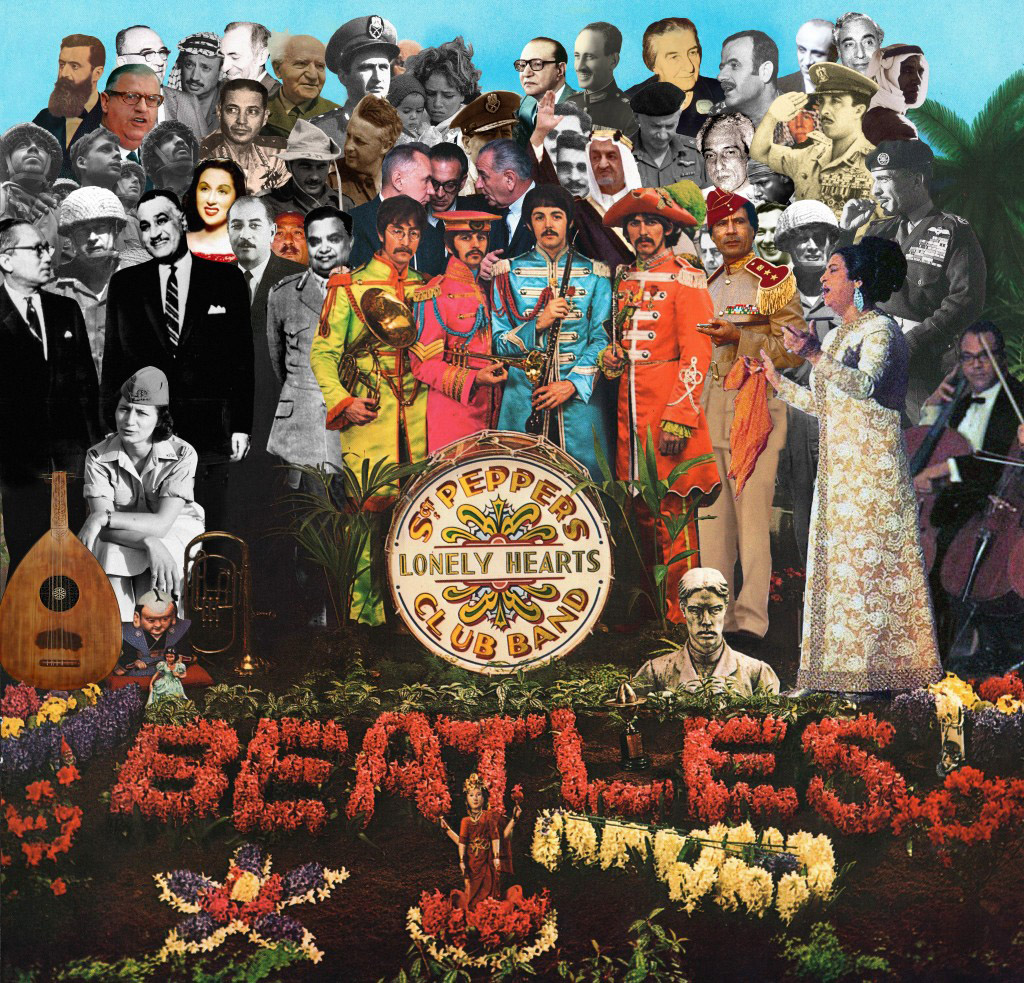
Fifty years ago, four young men from Liverpool arrived in America and changed the course of popular culture. On February 9, 1964, an estimated 73 million Americans tuned in to the Ed Sullivan Show to see The Beatles – John Lennon, Paul McCartney, George Harrison and Ringo Starr – perform their hits She Loves You, I Want to Hold Your Hand and Love Me Do. For the next six years, much of the world remained in the grip of “Beatlemania”.
“Their presentation on Ed Sullivan was perfect – cool suits and haircuts, and a cheeky wit that no other bands of the time had,” says Bob Santelli, Executive Director of the GRAMMY Museum in Los Angeles, explaining the Fab Four’s ongoing popularity. “They’re the Boomer Generation’s poster band, so younger people grew up listening to a Beatles soundtrack and also became fans.”
“You’d be hard pressed to find an area of American popular culture that doesn’t have The Beatles’ fingerprints on it,” continues Santelli. “They not only reinvented pop music, but influenced the politics, spirituality, fashion and graphic arts of their time.”
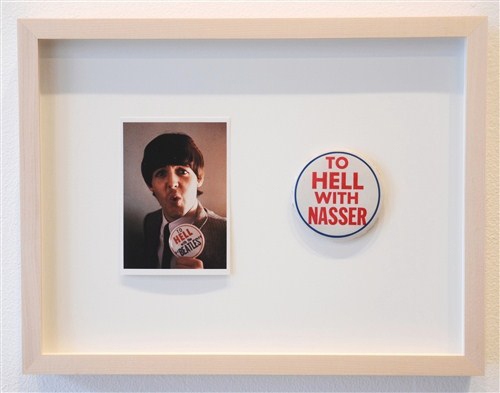
Visual artists have not been immune to The Beatles’ charisma in the 50 years since the band’s heyday. In 1963, before the group’s international breakthrough, British Pop artist Peter Blake started painting a portrait of the band that he hoped their “local fans” in the U.K. would like. Later, Blake created, in collaboration with sculptor Jann Haworth, the groundbreaking collage for the cover of Sgt. Pepper’s Lonely Hearts Club Band (1967). Fellow Brit Richard Hamilton took the band in a completely different direction visually when he produced the minimalist jacket for 1968’s The Beatles (or, the “White Album” in common Beatles-fan parlance). And, of course, two Beatles married artists: in 1969, Lennon married Yoko Ono, who had been associated with the Fluxus movement, and Paul McCartney married Linda Eastman, a photographer who had created iconic images of Janis Joplin, Jimi Hendrix and Aretha Franklin.
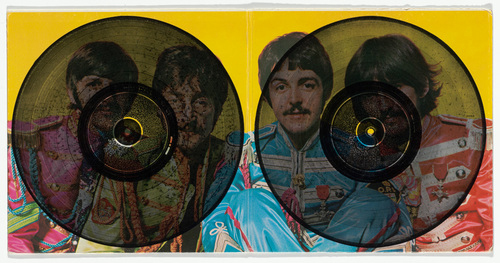
Many contemporary artists have found inspiration in these innovative album designs. Just prior to his Body Mix series (1991-92) in which he began stitching together album covers, New York-based Christian Marclay screen printed over the Sgt. Pepper’s gatefold jacket (Sergeant Pepper, 1990), the opaque black circles reminiscent of both vinyl records and shrouds. He also reconfigured the four glossy headshots of each Beatle that were included with early pressings of the White Album (Stitched Beatles, 1991), the mash-up of the band’s faces a visual representation of the pastiche of musical styles on that album or the fragmentation that was starting to take place among the band members at that time. One of Marclay’s most creative uses of the group’s music, however, is an even earlier sculpture in which he knit a pillow using the magnetic tape from cassettes of the band’s albums (The Beatles, 1989).
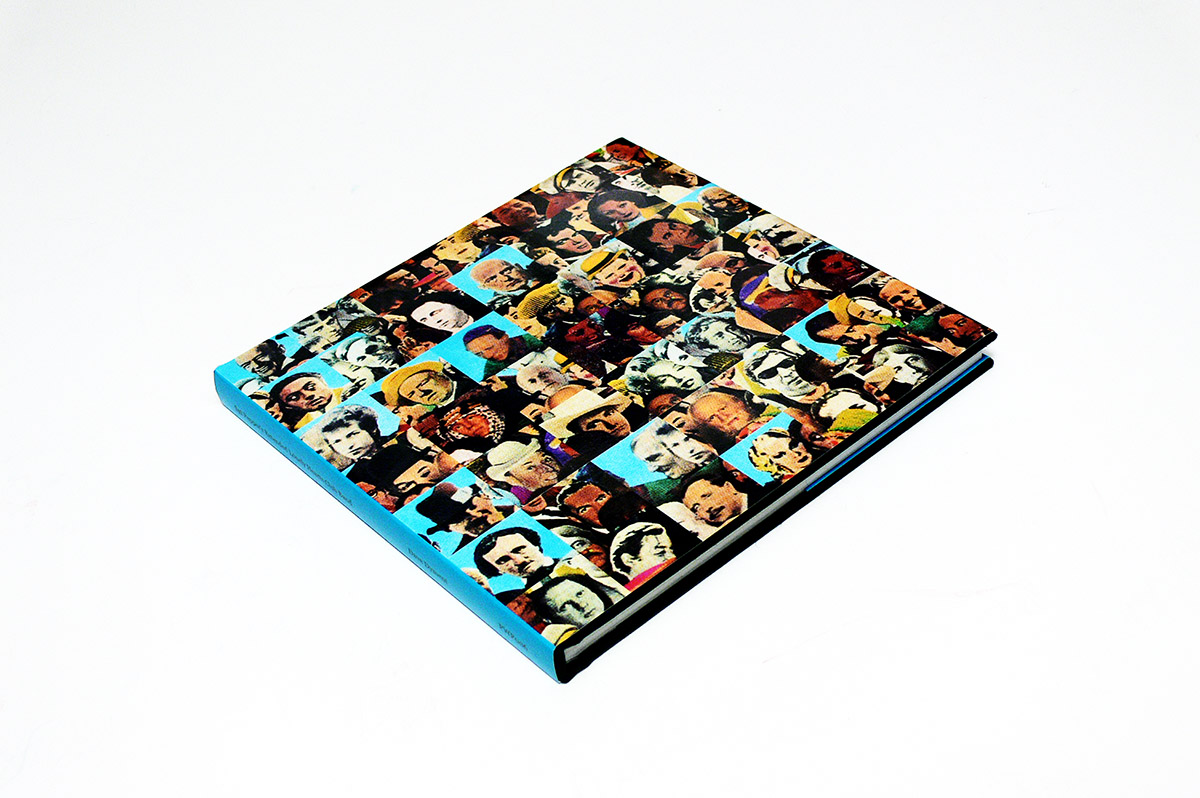
The famous collage created by Blake for the Sgt. Pepper’s record jacket was also the starting point for Sgt. Pepper’s Extended Lonely Hearts Club Band, a 2005 installation by Toronto-based Dave Dyment, who scoured libraries, bookstores and the Internet for images of the people on the album cover singing or playing musical instruments. “The idea is the figures in the collage are members of Sgt. Pepper’s band,” explains Dyment. “It wasn’t possible to find such images of everyone because of the era when some of the portraits were taken. The long exposure times meant that action shots were uncommon. But, I found the novelty of a saxophone-playing boxer (Sonny Liston) or a violin-playing scientist (Albert Einstein) pretty great.” The images were later compiled into an artist’s book by Toronto’s Paul and Wendy Projects.
This past January at Chicago’s Rhona Hoffman Gallery, Iraqi-American artist Michael Rakowitz used video, drawings, collage, and combinations of memorabilia to draw parallels between the band’s acrimonious split in 1970 and the collapse of Middle East relations. An informative and fascinating video, which feels that much more urgent given the current situation in Gaza, titled The Breakup (2010-14) combines footage from the band’s 1969 “free concert” on the roof of their Apple Corps. headquarters in London, a performance of Beatles songs by a Palestinian band, Sabreen, on the roof of the Swedish Christian Study Center in Jerusalem, and archival news footage from Middle East television. “The titles of The Long and Winding Road, Get Back, and Let it Be are like concrete poetry when read in the order they’re performed in the video,” explains Rakowitz. “The lyrics’ meanings are appropriated, speaking to hopes and dreams that can’t be deferred indefinitely.” A record of Sabreen’s cover versions, pressed on blue vinyl, was also produced for the exhibition. For the sleeve, Rakowitz re-imagined the Sgt. Pepper’s collage, surrounding The Beatles with key figures in the Palestinian-Israeli conflict, including Muammar al-Qaddafi, lurking over Harrison’s shoulder.
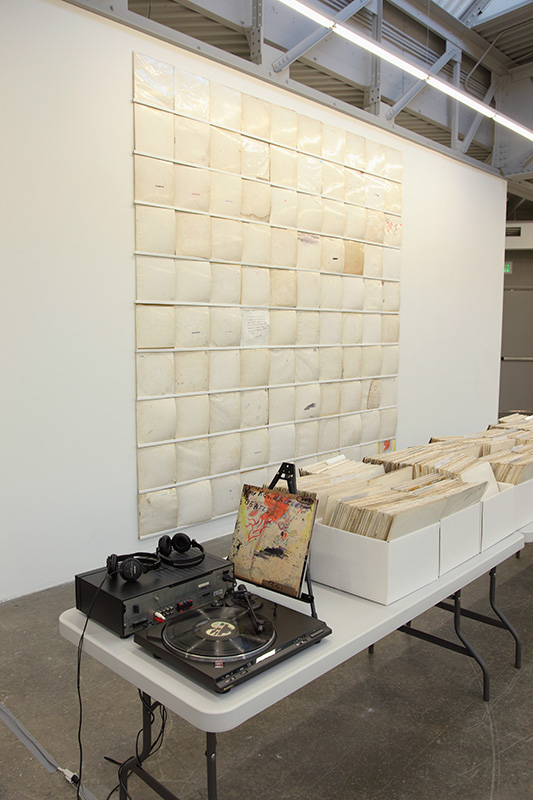
Also earlier this year, in March, New York-based artist Rutherford Chang’s installation We Buy White Albums was on view as part of a group exhibition at the Atlanta Contemporary Art Center in Georgia. Chang’s installation resembles a record store stocked only with White Albums. Visitors are able to flip through the record bins and examine the decades of wear-and-tear marking the once-pristine record jackets. “I’m most interested in the album as a cultural phenomenon,” says Chang, who currently owns over 1,000 first edition numbered pressings of the record, which he either purchased himself or received as donations to the project from owners of the album. “The plain cover allowed owners to personalize them, making them artefacts of an era,” he explains. “The numbers stamped on the album’s first pressing, which was around three million copies, resulted in a large, yet limited edition artwork.” Rutherford also created a multilayered recording of 100 of the records during a 2013 residency at Recess Gallery in New York, the trippy results of which can be found on his website. When pressed for his favourite song on the record, Chang says, “If you insist on asking, I would say Birthday.”
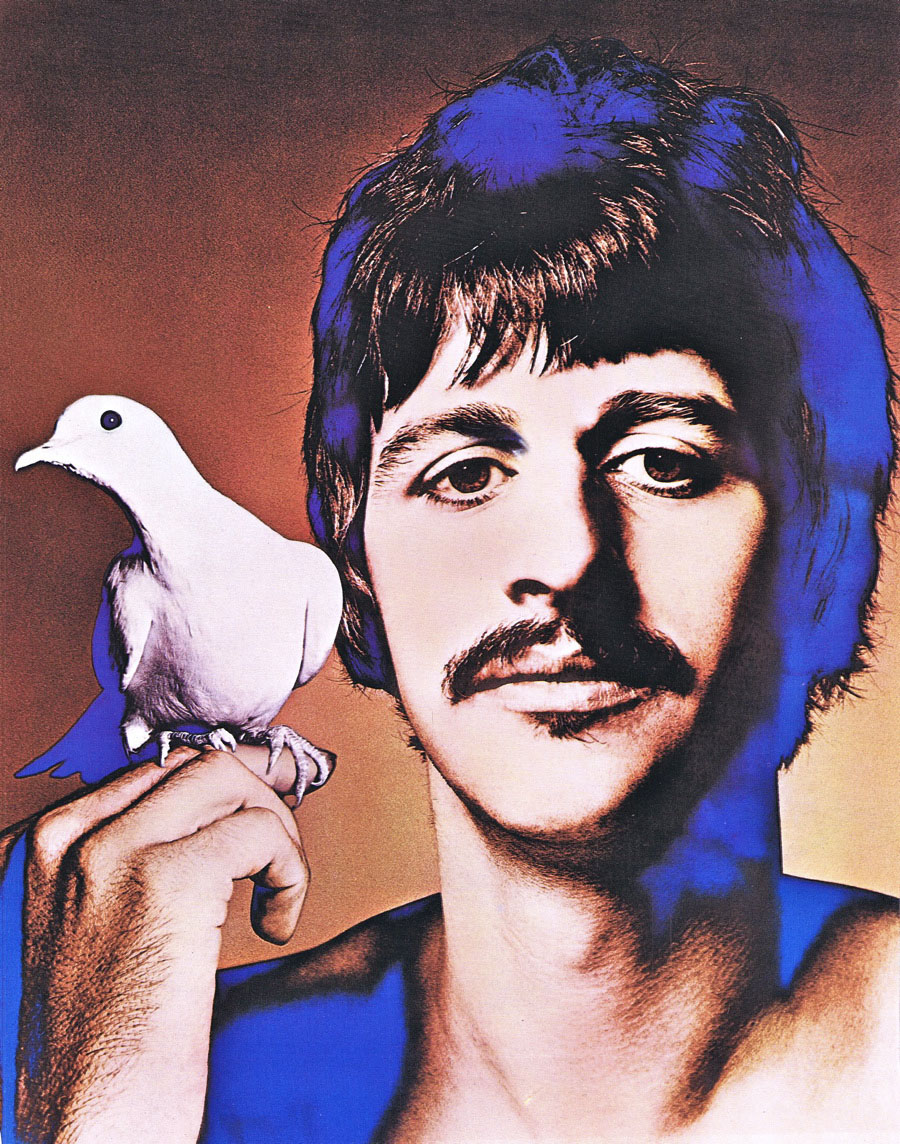
By the time the White Album was released, The Beatles were seen as exemplars of the peace and love era. In 1967, when All You Need is Love was topping pop charts around the world, photographer Richard Avedon portrayed them as such in a set of psychedelic, acid-hued portraits that were mass-produced as posters.
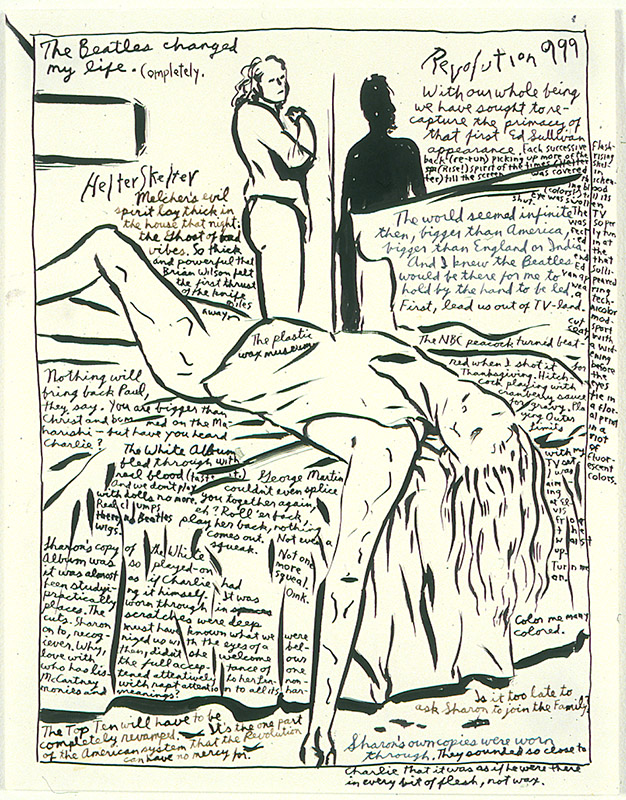
Raymond Pettibon, however, in a drawing from 1990 called Untitled (The Beatles changed my life), picks up on the darker undercurrents of the late-60s. In his trademark drawing style, Pettibon recounts the connection between cult leader Charles Manson, the band and the murder of actress Sharon Tate, then film director Roman Polanski’s wife, at the hands of Manson followers in 1969. Manson was, apparently, a Beatles fan, and believed that their song Helter Skelter (from the White Album) contained hidden messages about a coming apocalypse. “With our whole being we have sought to recapture the primacy of that first Ed Sullivan appearance,” reads text above Pettibon’s chilling sketch of Tate’s lifeless body.
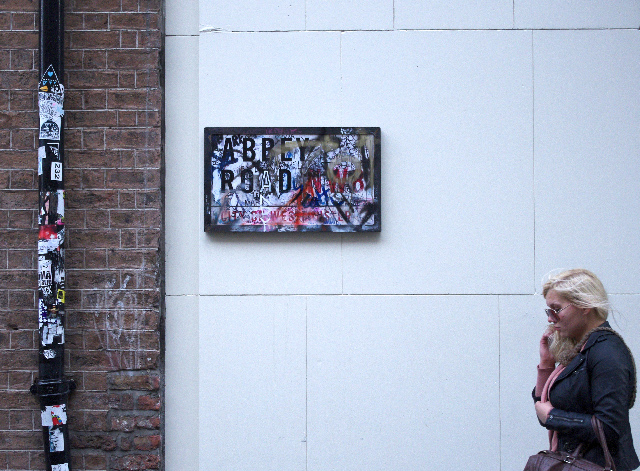
How fandom is expressed is of interest to Graham Dolphin, an artist based in Newcastle upon Tyne, U.K., who has modified album covers and scratched lyrics into records by different performers who inspire obsession among fans, including Nirvana, Joy Division, Madonna and Michael Jackson. In his series No More Beatlemania (2006, the title taken from a song by the experimental punk band Half Japanese), he cut into, peeled away and drew over the band members’ faces on the front covers of Rubber Soul, Sgt Pepper’s Lonely Hearts Club Band and Let It Be. “I was imposing my own hand onto these culturally loaded objects,” the artist says. “I wanted to enable a different viewing of them.” For the 2011 Dublin Contemporary Art exhibition, Dolphin reproduced the street signs demarcating Abbey Road in London, meticulously redrawing the graffiti left behind by fans visiting the site of that album’s iconic cover shot, and then displaying them throughout Dublin. “Obsessive fandom arises when someone famous dies tragically,” he says. “So, places like Abbey Road in London or Strawberry Fields in New York’s Central Park become pilgrimage sites.” (Indeed, hundreds of fans a day visiting the famous Abbey Road crosswalk, and having their pictures taken, are captured on a webcam set up outside the studios.)
“Lennon is, obviously, a focus of this kind of fandom,” Dolphin continues. “His image is fixed as a moral, idealistic, tragic icon, while Ringo and Paul remain too present in our lives…always plugging a new book of photos or an album. They’re not tinged with death glamour!”
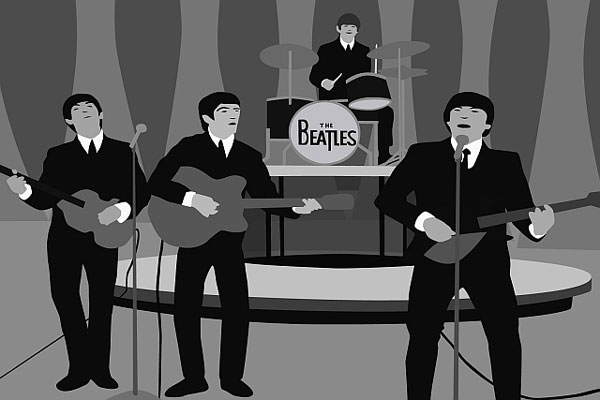
Los Angeles-based Kota Ezawa, whose distinctive animations are often derived from key moments in popular culture, used a clip of Lennon and Ono during their Bed-Ins for Peace in 1969 for one of the three components of his video installation Lennon, Sontag, Beuys (2005). However, the entire group appears in the later video Beatles Uber California (2011). “I was a Beatles fan when I was about 10-years-old, but I wouldn’t call myself a fan now even though I still like many of their songs,” he says. “I’m a fan of music in general.”
For California, Ezaza overdubbed the band’s televised performance of Twist and Shout on Ed Sullivan with The Dead Kennedys’ 1980 punk anthem California Uber Alles. “I’m not a Dead Kennedys fan either, but I feel a deep connection to punk rock,” continues the artist. “To me, punk rock is an art movement similar in importance to Surrealism or Dada.”
Ezawa says he first tried a mash-up of The Beatles with the Rolling Stones, but it didn’t quite work out the way he’d hoped, probably because of the similarities between the bands. “The discrepancy between what you see and what you hear is the payoff in the piece,” explains the artist. “Of course, image and sound had to link up enough to create the illusion that The Beatles are playing a punk song, and I had to do very little to match them up. It works despite the source material coming from two very different places – the pace and energy of the two songs is quite similar.”
A touring exhibition of Beatles memorabilia organized by the GRAMMY Museum, Ladies and Gentlemen…The Beatles!, is on view at the Midwest Music Museum in Bloomington, Minnesota until Sept. 7, 2014.
Rutherford Chang’s We Buy White Albums appears at FACT Liverpool from August 15 to September 16, 2014 in conjunction with that city’s international music festival.
New installations by Kota Ezawa are on view at the Yerba Buena Arts Center and other public spaces in San Francisco until the end of 2014. Ezawa’s video work is also part of a two-person exhibition (with Marc Audette) at Pierre-Francois Ouellette Art Contemporain in Montreal until Sept. 13.
Read more about Graham Dolphin’s work in Magenta’s Art + Music issue from Fall 2011.
Bill Clarke was the Executive Editor of Magenta Magazine Online from its inception in September 2009 until May 2017. His writing has been published in Modern Painters, Art Review, Canadian Art, Artnews and several other publications. In January 2017, he assumed the position of associate director at Angell Gallery in Toronto.
art Beatles Christian Marclay Dave Dyment Graham Dolphin Kota Ezawa Michael Rakowitz Raymond Pettibon Richard Avedon Rutherford Chang



